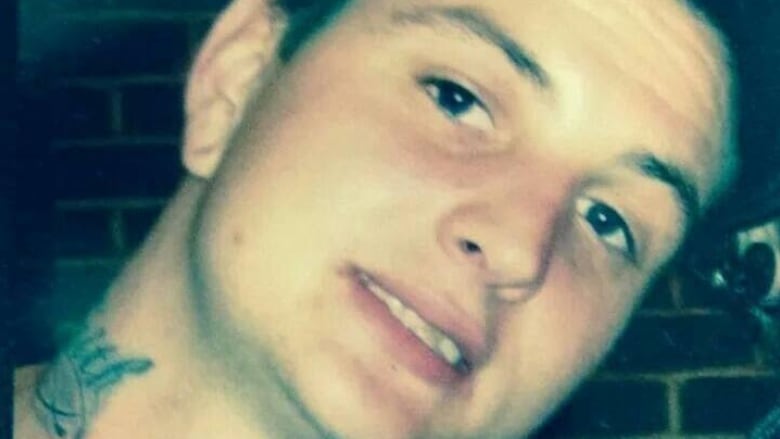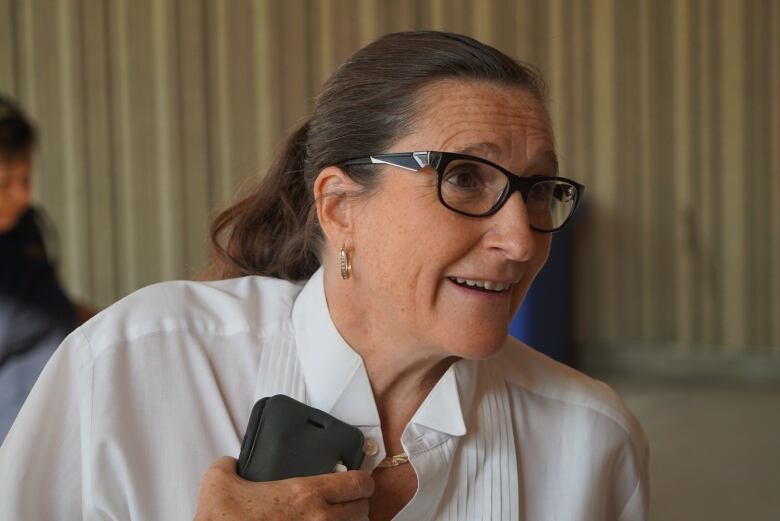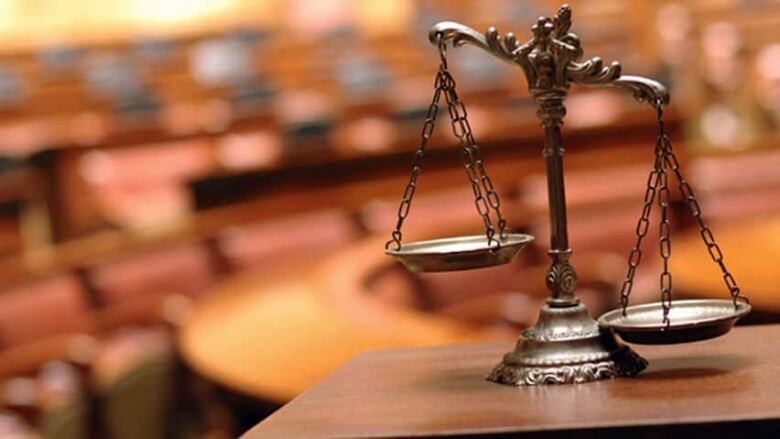What the jury didn't hear: Aboriginal jury representation disputed in Anthony George case
Lack of potential aboriginal jurors in pool became an issue just as the trial was set to begin

The jury in thesecond-degree murder trial of London inmate Anthony George never heard that his lawyer objected to the way the jury was selected in the casebecause potential jurors from London's three Indigenous communities were never given a chance to serve.
George, 32, of Kettle Point First Nation, had a last minute change of heart on Tuesday just as his three-week trial was set to begin.
He changedhis plea to guilty to second-degree murder in the 2013 beating death of his cell mateAdam Kargus at the Elgin Middlesex Detention Centre.
George will be sentenced next week and now that the jury has been released from its duty, CBC News can now legally publish the details of what happened when the jury wasn't present in court.
Over the course of two days, the jury barely spent any time in the courtroom. Instead, they waited in the jury room for hours, only to return to court long enough to be told by the judge to wait again, as lawyers on both sides tried to resolve a simmering dispute that goes to the heart of a longstanding problem of fairness and race that has been festering within the Canadian justice system for years.

Anthony George's lawyer, Terry Brandon,forcefully argued that the lack of participation bythree Indigenous communities in the London area createdthe grounds for misconduct on behalfof justice officials for not doing more to get the people of those communities involved in serving on the jury.
She said that the jury rolls for London's three indigenous communities were not adequately prepared because they were based on a nearly 20-year-old list.
On top of that, she told the court,once the jury rolls were delivered by the province to the three band offices, they were never actually delivered to potential jurors in order to give them a chance to serve.
"How can we haverandomness if none of the participants on the reserves are included?" Brandon asked the presiding judge, Justice Marc Garson. "It skews the process and by skewingthat, it interferes with the entireprocess with the utmost respect."
"If the defense was aware," she said. "That would have been an issue on a change of venue application."
"I don't for a minute minimize any of the issues you're discussing in respect to increased representation," Garson told Brandon.
"I just have a little concern with this idea with saying this is a surprise or a shock," he said. "The judicial case law is abundantly populated with this sort of problem."
An issue in Ontario since 2007
"The fact that this has been a long-standing problem is certainly true,"saidJonathanRudin, the program director for Aboriginal Legal Services in Toronto.
"People didn't know it was a long-standing problem until it came out accidentally, which is how we found out about it."
Rudin said while participation rates for prospective jurors runs at about 50 per cent in most of Ontario, that number shrinks to less than 10per cent on some First Nations reserves, where in most cases people don't even know they're being asked to serve.

The year the issue came to light was 2007, when a First Nations man namedCliffordKokopenacewas charged in the death of TaylorAssinduring an intoxicated altercation at Grassy Narrows First Nation.
Kokopenace's trial took place inKenora, Ont., but nobody on the jury that convicted him lived on reserve at Grassy Narrows or any of the other 46 First Nations in the district.
Rudingot involved when his agency started working as anintervenoron the case. Aboriginal Legal Serviceswas representing a number of families with similar concerns about the fairness of First Nations representation on inquest jury rolls in Northern Ontario.
The Kokopenacecase was appealed. Hismanslaughter conviction was quashed by the Ontario Court of Appeal, the province's top court, because of under-representationof aboriginalpeople in the jury process.
In the end, it landed at the Supreme Court of Canada, which ruled in a 5-2 decision that Kokopenace's conviction should be not be overturned because of a lack of aboriginal jurors.
"While the Supreme Court acknowledge there was problems, they thought Ontario was doing the best they could to fix the problems. So the majority of the court said it wasn't an issue," Rudin said.
"What's happened is that the Ontario government, in order to get the names of the people who live on reserve can't rely on the same systems they rely on every else," he said, noting most jurors are drawn from municipal tax lists, which don't apply to reserves.
"They used to rely on the band lists from First Nations and in about 2000 [the province] stopped getting those lists from Indian Affairs."

"Ever since then they've been trying to find other ways of getting that information, or perhaps not trying very hard,"Rudinsaid."From our perspective the work the ministry has done is not particularly great."
The province has had four years to fix a problem it first identified in 2013, when retired Supreme Court Justice Frank Iacobucci issued hisreport entitled First Nation Representation on Ontario Juries.
The report identified a justice system in crisis that's failing First Nations people andmade 17 sweeping recommendations on how to fix it.
While some of those recommendations have been implemented by the province, such as the establishment of committees to examine the problem, it seems the same issues of Aboriginal representation continue to dog the Ontario court system.
Given that, Jonathan Rubin said it's unclear if the province is actually making any headway on the issue.
"That's a very good question," Rubin said."It does not seem to be improving."












_(720p).jpg)


 OFFICIAL HD MUSIC VIDEO.jpg)
.jpg)



























































































